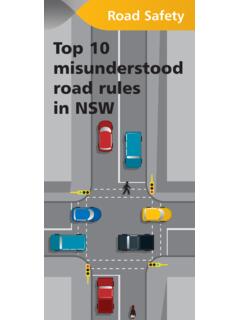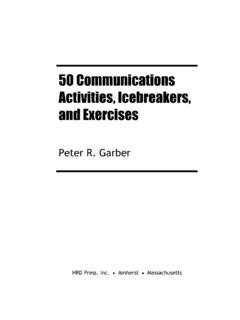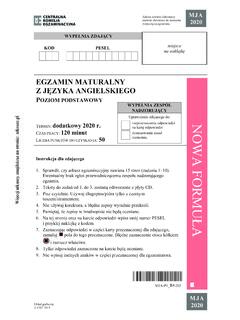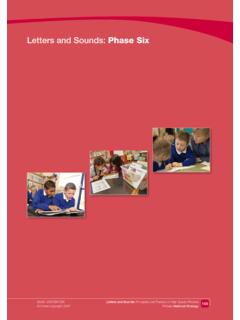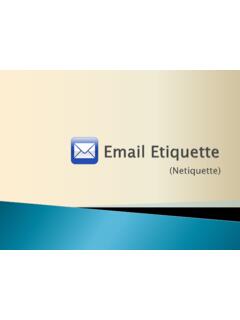Transcription of HOW TO READ A BOOK - Math Encounters Blog
1 HOW TO read A book . A Guide to Reading the Great Books by Mortimer J. Adler Table of Contents Preface PART I . THE ACTIVITY OF READING. CHAPTER ONE To the Average Reader 1 2 3 4. CHAPTER TWO The Reading of "Reading". 1 2 3 4 5. CHAPTER THREE Reading is Learning 1 2 3 4 5 6. CHAPTER FOUR Teachers, Dead or Alive 1 2 3 4 6. CHAPTER FIVE The Defeat of the Schools 1 2 3 4 5 6 7 8. CHAPTER SIX On Selfhelp 1 2 3 4. PART II . THE rules . CHAPTER SEVEN From Many rules to One Habit 1 2 3 4 5 6. CHAPTER EIGHT Catching on From the Title 1 2 3 4 5. CHAPTER NINE Seeing the Skeleton 1 2 3 4 5 6 7. CHAPTER TEN Coming to Terms 1 2 3 4 5 6. CHAPTER ELEVEN What's the Proposition and Why 1 2 3 4 5 6 7. CHAPTER TWELVE The Etiquette of Talking Back 1 2 3 4 5. CHAPTER THIRTEEN The Things the Reader Can Say 1 2 3 4 5. CHAPTER FOURTEEN And Still More rules 1 2 3 4 5 6 7 8. PART III . THE REST OF THE READER'S LIFE. CHAPTER FIFTEEN The Other half 1 2 3 4 5.
2 CHAPTER SIXTEEN The Great Books 1 2 3 4 5 6 7 8. CHAPTER SEVENTEEN Free Minds and Free Men 1 2 3 4. APPENDIX: GREAT BOOKS OF THE WESTERN WORLD. Imaginative Literature HISTORY AND SOCIAL SCIENCE. NATURAL SCIENCE AND MATHEMATICS. PHILOSOPHY AND THEOLOGY. GATEWAY TO THE GREAT BOOKS. IMAGINATIVE LITERATURE. CRITICAL ESSAYS. MAN AND SOCIETY. NATURAL SCIENCE. MATHEMATICS. PHILOSOPHICAL ESSAYS. Preface ---- In this special edition of How to read a book , I can make clear what was not entirely clear when the book was first published in 1940. Readers of the book knew, though its title did not indicate this with complete accuracy, that the subject was not how to read any book , but how to read a great book . In 1940 the time was not yet ripe for such a title, with which the book might not have reached the large audience that it did. Today, with hundreds of thousands of American families engaged in reading and discussing the great gooks books that alone require the kind of reading described the situation is much changed.
3 I have therefore added a new subtitle for this edition: A guide to Reading the Great Books. How to read a book attempts to inculcate skills that are useful for reading anything. These skills, however, are more than merely useful they are necessary for the reading of great books, those that are of enduring interest and importance. Although one can read books, magazines, and newspapers of transient interest without these skills, the possession of them enables the reader to read even the transient with greater speed, precision, and discrimination. The are of reading analytically, interpretively, and critically is indispensable only for the kind of reading by which the mind passes form a state of understanding less to a state of understanding more, and for reading the few books that are capable of being read with increasing profit over and over again. those few books are the great books and the rules of reading here set forth are the rules for reading them.
4 The illustrations that I have given to guide the reader in applying the rules all refer to the great books. When this book was written, it was based on twenty years of experience in reading and discussing the great books at Columbia University, at the University of Chicago, and St. John's College in Annapolis, as well as with a number of adult groups. Since then the number of adult groups has multiplied by the thousands; since then many more colleges and universities, as well as secondary schools all over the country, have introduced courses devoted to reading and discussing the great books, for they have come to be recognized as the core of a liberal and humanistic education. But, though these are all advances in American education for which we have good reason to be grateful, the most important educational event since 1940 has been, in my judgment, the publication and distribution by Encyclopedia Britanica, Incorporated, of Great Books of the Western World, which has brought the great books into hundreds of thousands of American homes, and into almost every public and school library.
5 To celebrate the fact, this new edition of How to read a book carries a new Appendix that lists the contents of Great Books of the Western World; and also, accordingly, a revised version of Chapter Sixteen. Turn to page 373 and you will find the great books listed there into four main groups: imaginative literature (poetry, fiction, and drama);. history and social science; natural science and mathematics; philosophy and theology. Since 1952, when Great Books of the Western World was published, Encyclopedia Britannica has added a companion set of books, consisting of shorter masterpieces in all fields of literature and learning, properly entitled Gateway to the Great Books. You will find the contents of this set also listed in the Appendix, beginning on page 379. The present book is, as its subtitle indicates, a guide to reading the things that most deserve careful reading and rereading, and that is why I recommend it to anyone who owns Great Books of the Western World and Gateway to the Great Books.
6 But the owner of these sets has other tools at hand to help him. The Syntopicon, comprising Volumes 2 and 3 of Great Books of the Western World, is a different kind of guide to reading. How to read a book is intended to help the reader read a single great book through cover to cover. The Syntopicon helps the reader read through the whole collection of great books by reading what they have to say on any one of three thousand topics of general human interest, organized under 102 great ideas. (You will find the 102 great ideas listed on the jacket of this book .) Volume I of Gateway to the Great Books contains a Syntopical Guide that serves a similar purpose for that set of shorter masterpieces. One other Britannica publication deserves brief mention here. Unlike each year's best- sellers that are out of date one year later, the great books are the perennials of literature relevant to the problems that human beings face in every year of every century.
7 That is the way they should be read for the light they throw upon human life and human society, past, present, and future. And that is why Britannica publishes an annual volume, entitled The Great Ideas Today, the aim of which is to illustrate the striking relevance of the great books and the great ideas to contemporary events and issues, and to the latest advances in the arts and sciences. With all these aids to reading and to understanding, the accumulated wisdom of our Western civilization is within the reach of anyone who has the willingness to put them to good use. Mortimer J. Adler Chicago September, 1965. PART I . THE ACTIVITY OF READING. CHAPTER ONE. To the Average Reader -1- This is a book for readers who cannot read . They may sound rude, though I do not mean to be. It may sound like a contradiction, but it is not. The appearance of rudeness and contradiction arises only from the variety of senses in which the word "reading" can be used.
8 The reader who has read thus far surely can read , in some sense of the word. You can guess, therefore, what I must mean. It is that this book is intended for those who can read in some sense of "reading" but not in others. There are many kinds of reading and degrees of ability to read . It is not contradictory to say that this book is for readers who want to read better or want to read in some other way than they now can. For whom is this book not intended, then? I can answer that question simply by naming the two extreme cases. There are those who cannot read at all or in any way.: Infants, imbeciles, and other innocents. And there may be those who are masters of the art of reading who can do every sort of reading and do it as well as is humanly possible. Most authors would like nothing better than such persons to write for. But a book , such as this, which is concerned with the art of reading itself and which aims to help its readers read better, cannot solicit the attention of the already expert.
9 Between these two extremes we find the average reader, and that means most of us who have learned our ABC's. We have been started on the road to literacy. But most of us also know that we are not expert readers. We know this in many ways, but most obviously when we find from some things too difficult to read , or have great trouble in reading them; or when someone else has read the same thing we have and shown us how much we missed or misunderstood. If you have not had experiences of this sort, if you have never felt the effort of reading or known the frustration when all the effort you could summon was not equal to the task, I do not know how to interest you in the problem. Most of us, however, have experienced difficulties in reading, but we do not know why we have trouble or what to do about it. I think this is because most of us do not regard reading as a complicated activity, involving many different steps in each of which we can acquire more and more skill through practice, as in the case of any other art.
10 We may not even think there is an art of reading. We tend to think of reading almost as if it were something as simple and natural to do as looking or walking. There is no art of looking or walking. Last summer, while I was writing this book , a young man visited me, He had heard what I was doing, and he came to ask a favor. Would I tell him how to improve his reading? He obviously expected me to answer the question in a few sentences. More than that, he appeared to think that once he had learned the simple prescription, success would be just around the corner. I tried to explain that it was not so simple. It took many pages of this book , I said, to discuss the various rules of reading and to show how they should be followed. I told him that this book was like a book how to play tennis. As written about in books, the art of tennis consists of rules for manage each of the various strokes, a discussion of how and when to use them, and a description of how to organize these parts into the general strategy of a successful game.


